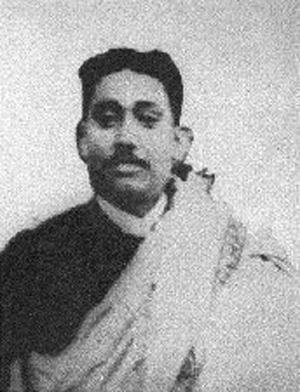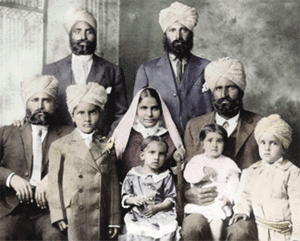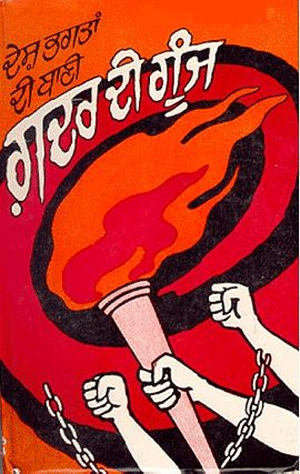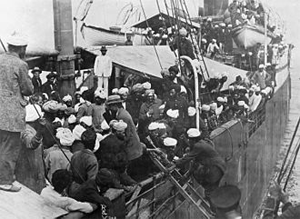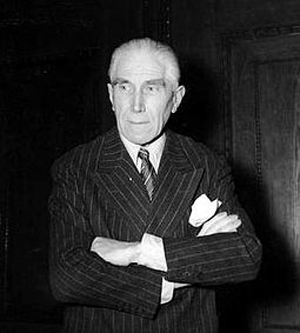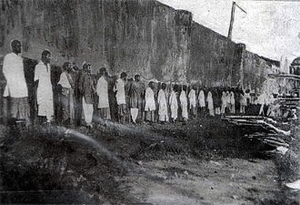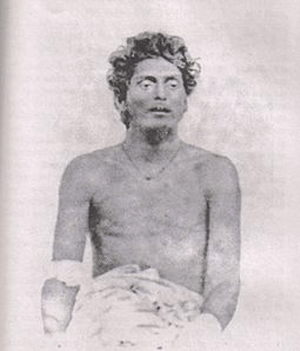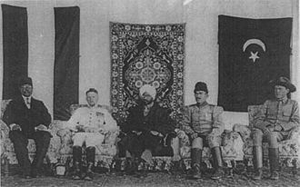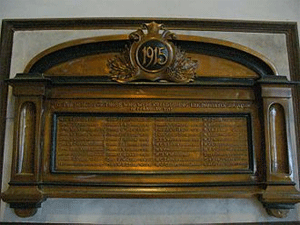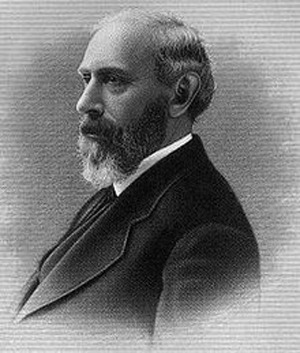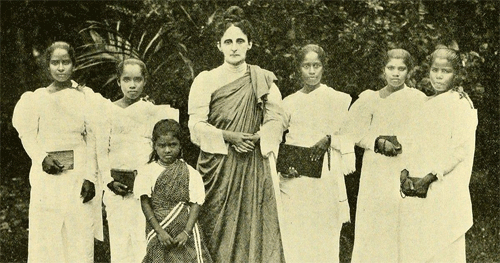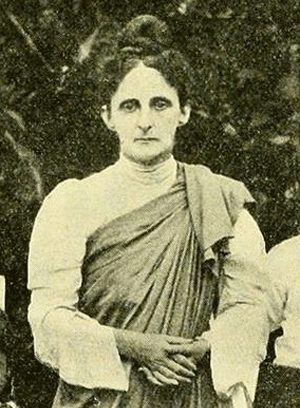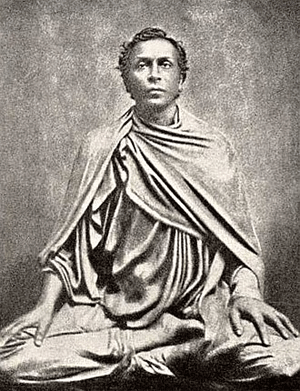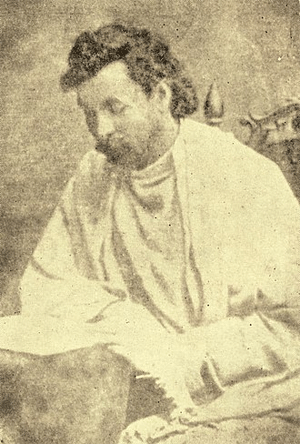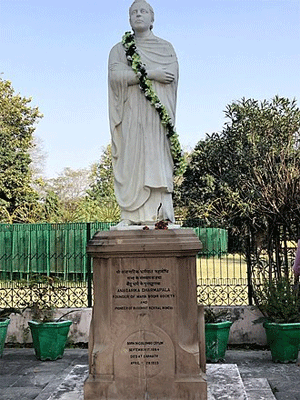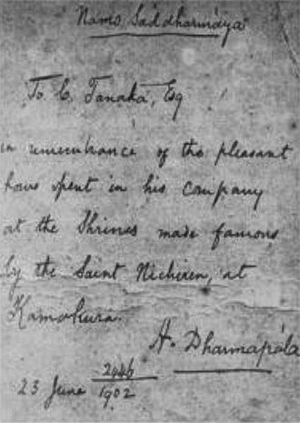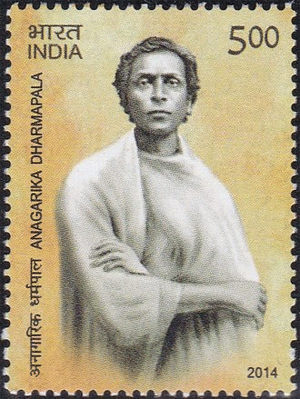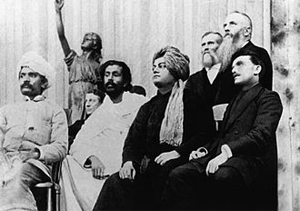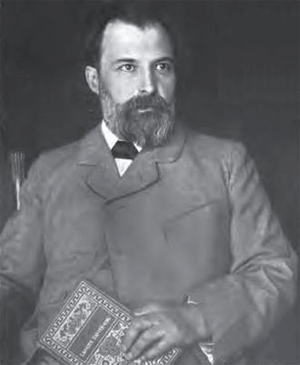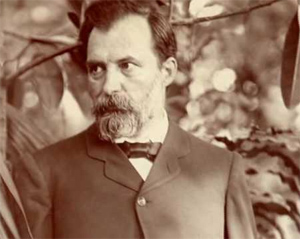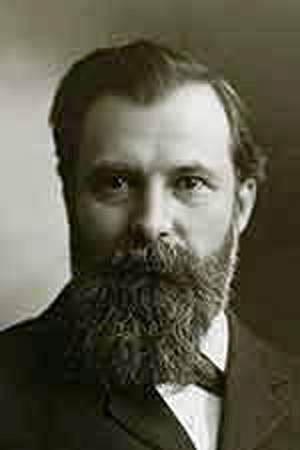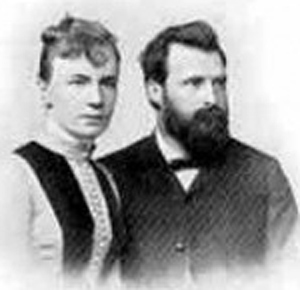by 60 Minutes
January 23, 1983 7:00 PM
NOTICE: THIS WORK MAY BE PROTECTED BY COPYRIGHT
YOU ARE REQUIRED TO READ THE COPYRIGHT NOTICE AT THIS LINK BEFORE YOU READ THE FOLLOWING WORK, THAT IS AVAILABLE SOLELY FOR PRIVATE STUDY, SCHOLARSHIP OR RESEARCH PURSUANT TO 17 U.S.C. SECTION 107 AND 108. IN THE EVENT THAT THE LIBRARY DETERMINES THAT UNLAWFUL COPYING OF THIS WORK HAS OCCURRED, THE LIBRARY HAS THE RIGHT TO BLOCK THE I.P. ADDRESS AT WHICH THE UNLAWFUL COPYING APPEARED TO HAVE OCCURRED. THANK YOU FOR RESPECTING THE RIGHTS OF COPYRIGHT OWNERS.
Approved For Release 2007/05/21 : CIA-RDP88-01070R000100540010-5
"RADIO TV REPORTS, INC.
4701 WILLARD AVENUE, CHEVY CHASE, MARYLAND 20815 656-4068
FOR: PUBLIC AFFAIRS STAFF
PROGRAM: 60 Minutes
STATION: WDVM TV, CBS Network
DATE: January 23, 1983 7:00 PM
CITY: Washington, DC
SUBJECT: National and World Councils of Churches
MORLEY SAFER: Religion, money, revolutionary politics. There is no more explosive mixture. Our report, "The Gospel According to Whom," has equal measures of all three. It is a look at the National Council and World Council of Churches. Long before this report was completed, it was condemned from the pulpit, and the National Council suggested we'd succumbed to pressure from the religious right.
The National Council is an association of the major American Protestant denominations: the Episcopal Church, the United Methodists, United Presbyterian, United Church of Christ, 32 in all. Most of those churches are also members of the World Council of Churches. Each week American Protestants who belong to those churches put $150 million into their collection plates.
Do the people in the pews go along with their leadership on how that money is spent?
A fairly typical Sunday morning in a fairly typical town. Americans are still among the most church-going people in the world. About half the population regularly attends services. The congregation is the First United Methodist Church of Logansport, Indiana; Pastor Michael Lusseau presiding.
Logansport is middle America and proud of it. Its major vice, in fact, may be the pride it holds in the Berries, its high school baseball team.
But this weekend, Pastor Lusseau has more on his mind than his son's batting average. His concern is the money in the collection plate. Americans give more to their churches than any other charity, and this congregation is as generous as any: money to do God's work at home and abroad.
But what if some of that money is doing this man's work, or these people? If it surprises you, it may surprise these Methodists even more, for that act of Christian charity this Sunday in Logansport may end up feeding a starving child. That they know. Maybe the gift of literacy to someone somewhere. That they know. Or maybe the price of a brand new Soviet assault rifle. That they may not know.
It is near impossible to follow church money in any precise way. When Pastor Lusseau and his parishoners tried to, they found that it was being absorbed into the coffers, committees and ad hoc committees of the United Methodist Church, National Council of Churches and the World Council, and then surfacing in some surprising places. They found some of it was being spent on causes that seemed more political than religious, on causes that seemed closer to the Soviet-Cuban view of the world than Logansport, Indiana's, and they didn't like it.
UNIDENTIFIED MAN: The World Council, in particular, has become a political organization and not, as they set out, to be a fellowship of Christian organizations who accept Jesus Christ as our God and savior.
UNIDENTIFIED MAN: We don't feel -- that is, the people in our church that have discussed it -- that the Methodists belong in an organization which permits the use of money to accomplish political objectives. Why should we support one group rather than another in Africa any more than we should in the United States?
UNIDENTIFIED MAN: I think most of our parishioners feel that their outcries of total frustration are falling on deaf ears. I think there's a bureaucracy there that maybe it's so large, that we can't get to it.
SAFER: The bureaucracy they're concerned about, indeed what many American Protestants are concerned about, is largely headquartered, 475 Riverside Drive in New York City. This building is officially known as the Inter-Church Center. The people who work in it call it the God Box. It's the home of the National Council of Churches. It's also the national headquarters for dozens of agencies attached to the United Methodists, the United Presbyterians and other Protestant churches. It's also the U.S. headquarters of the World Council of Churches, which is headquartered in Geneva, Switzerland. All these agencies claim a strict independence from each other, but, in fact, there's a constant exchange of programs and personnel. And although they may be technically independent, they do work in concert and are often hard to distinguish, one from the other. What all the agencies have in common is that they get most of their budgets from the people in the pews, a small percentage of each Sunday's collection plate.
The annual budgets are: the United Methodists, $70 million; the United Presbyterians, 35 million; the National Council of Churches, $44 million, and $12 million from American contributions alone to the World Council of Churches.
All that money is sent on a very complex maze of programs by groups and organizations in the thousands that touch people's religious and social and their political lives as well.
There are bureaucracies within bureaucracies in this building, and often one hand does not know what the other's up to.
Bishop James Armstrong is president of the National Council of Churches. He's also United Methodist Bishop for Indiana and is a delegate to the next assembly of the World Council of Churches.
Well, are you going to represent some of those grassroots' voices that have strong reservations about what the church is doing in what they regard as political areas?
BISHOP JAMES ARMSTRONG: A long time ago, Martin Luther said that his conscience was bound to the word of God. I will certainly be sensitive to what people in the churches are feeling and saying and thinking.
SAFER: That hasn't answered the question. Are you going to speak for those people?
BISHOP ARMSTRONG: That is not my primary concern. My primary concern is to be faithful to the gospel, as I understand it.
SAFER: But do you feel a sense of responsibility to those people?
BISHOP ARMSTRONG: Of course I do. And I will attempt, as best I can, to respond on the basis of my understanding of them.
SAFER: Bishop Armstrong feels that too much emphasis is placed by outsiders on the political activities of the churches.
BISHOP ARMSTRONG: I don't understand why we're never asked about international Sunday school lessons. I don't understand why we're never asked about five billion pounds of clothing and foodstuffs and medicine that have gone to every part of the world to relieve every form of human misery. These are things that don't seem to come into these conversations.
SAFER: Well, I think -- I think most people do assume that a religious organization is doing good works, is spreading the world of God, is helping the hungry. What they don't assume is that it's so active in politics.
We read Bishop Armstrong a passage from a World Council publication.
But would you agree, for example, with a statement that says "The international capitalistic economic system is repugnant to the Christian concept of justice. It's a denial of the lordship of Christ, therefore an abomination to the creator."
BISHOP ARMSTRONG: No. No. Nor do I believe that the capitalist system, nor the socialist system, is beyond the judgment of God. We don't belong to Karl Marx. We don't belong to Adam Smith. We belong to Jesus Christ. We must. That's our identity.
SAFER: A great deal, though, of the National -- of the World Council would seem to not exactly belong to the Marxist system, but speak in much the same language.
BISHOP ARMSTRONG: Well, you're asking me to speak in the language of the United States government. I won't.
SAFER: Few would doubt Bishop Armstrong's sincerity, but critics feel that the National and the World Council lean toward Karl Marx when it comes to giving certain financial support.
Among the things they object to: money to NACLA, the North American Congress on Latin America, based in New York. Money from the Presbyterian Hunger Program helped NACLA publish this book, Agribusiness in the Americas, an indictment of capitalism and American agricultural corporations.
Two million dollars from the World Council went to buy heavy equipment and materials for new economic zones in Vietnam. Critics claim new economic zones are little more than forced labor camps.
After the Cuban supported revolution in Grenada, the National Council contributed money to publish a primer on the island. What was produced was a tribute to the revolution.
Another item. For a center in Nicaragua that would, quote, "serve the revolutionary reality in Latin America," unquote, $60,000 from the United Methodists.
The Cuba Resource Center received heavy financial support from the National Council member churches. It produced blatantly pro-Castro publications. And a continuing theme was to redefine Christianity in Marxist revolutionary terms.
Another item. To the Nicaraguan literacy program, $1-1/2 million from the World Council. The purpose was to raise political awareness while teaching reading. The teachers were Cuban; American teachers were not welcome.
Another item. The Conference in Solidarity with the Liberation Struggles of Southern Africa in New York was funded and organized by the United Methodists. But when it took place, according to FBI documents, it was run by the U.S. Communist Party and was entirely manipulated by the Soviet Union. The only Methodist official on the platform was the one who gave the invocation.
We asked Bishop Armstrong about a few of those examples.
Are you familiar with the Cuba Resource Center?
BISHOP ARMSTRONG: No.
SAFER: Have you ever seen their publication?
BISHOP ARMSTRONG: No.
SAFER: It claims to be a newsletter, an information letter about the clergy in Cuba. And in fact, it's a propaganda tract that shouts out the glories of the revolution.
BISHOP ARMSTRONG: No, I have no knowledge of it.
I want it to be known that my first responsibility in the National Council of Churches is not to dig around in the corners and move into the closets, but to deal with those things I consider supremely important.
SAFER: There was an anti-apartheid meeting called at Columbia University in New York that was, in effect, run by the American Communist Party. Your name was on the preparatory committee.
BISHOP ARMSTRONG: But I was not contacted. There was no permission for that.
SAFER: Well, how did it get there?
BISHOP ARMSTRONG: I have no idea.
SAFER: So somebody's trying to manipulate.
BISHOP ARMSTRONG: I would say so.
SAFER: Richard Newhouse is a Lutheran pastor; Ed Robb, a Methodist minister. They claim to represent middle-of-the-road Protestants and, through their organization, the Institute on Religion and Democracy, which is funded by some conservative foundations, they've been putting some tough questions to the World and National Councils.
REVEREND ED ROBB: I have the opportunity of preaching all over the country. And I have found that in every geographical area of this nation, people are concerned, many are aroused about the radical left-wing views of the National Council of Churches, and also the views expressed by the bureaucracies of the main line denominations. And then I noticed a pattern of support of totalitarian leftist regimes across the country -- across the world, and an apology for this type of oppression.
SAFER: Can you give me one good, hard example?
REVEREND ROBB: ETHICA, which is funded by the National Council of Churches, has a booklet out about the colonialism of the United States in Puerto Rico.
SAFER: ETHICA is run by Philip -- the Reverend Philip Wheaton, correct?
REVEREND ROBB: That's correct. And they have a crusade on about U.S. colonialism in Puerto Rico. And of course the Puerto Rican people have voted time and again to remain a part of the United states as a commonwealth. It seems ridiculous. But why should National Council of Churches' money be spent for such dubious causes as that?
SAFER: Philip Wheaton, who runs that, would describe himself as a dedicated Christian.
REVEREND ROBB: He comes across as a revolutionary.
SAFER: The Reverend Philip Wheaton is an Episcopalian priest who heads a group called ETHICA, which promotes liberation theology in Latin America. ETHICA gets $15,000 a year from the National Council of Churches, and Wheaton acts an an adviser on Latin America and the Caribbean.
REVEREND PHILIP WHEATON: My feeling, Morley, is that colonialism is dead, that dictatorial rule has the writing on the wall, if not moving out of existence and style, that the whole previous concept of the United states as an empire is under very strong attack.
SAFER: You say you fellow the people. Do you fellow the people when they choose violence, terrorism? When they've aligned themselves with godless Marxism, do you still follow them?
REVEREND WHEATON: I really object, Morley, to the use of the word "terrorist," because it's not only a catchword, but it's a propagandistic word. And if you look at 90% of the terror that's going on in Central America, it is being created not only by the ruling juntas and the paramilitary forces, but by U.S. aid and support going to those regimes.
SAFER: You get financial support from the National Council of Churches. Do you think the people who put their dollar bills into the collection plate on Sunday morning go along with your ideas?
REVEREND WHEATON: People throughout the churches in the United States, in relationship to Central America and the Caribbean, are reading our materials, are using our materials regularly for study programs. The Methodist Church has a regular program of bringing students into Washington, D.C., and they bring me in to present an analysis of Central America.
So my answer is that certainly a portion of the churches find our work very helpful, very useful.
PASTOR RICHARD NEWHOUSE: In El Salvador, you'll find that the National Council of Churches and the main line denominational bureaucracies have consistently supported the FDR, the Marxist guerrillas. But when you challenge them, they'll say, well, show us a resolution where we are supporting the FDR? And there is no resolution. But if you read all their materials, if you see where their money is being spent, you'll find that all of their sympathies are with the FDR.
SAFER: As an example of the churches showing a political bias, critics point to this film strip on the war in El Salvador, produced by the United Methodist Church, in cooperation with the National Council of Churches.
NARRATOR: Many of the FMLN have been branded communists, but everywhere I walked I saw the cross of Christ. The Christian symbol of death and resurrection was worn around the neck along with the bullets. To our Western minds and hearts, to see this juxtaposition of the cross and the gun is a shock. But in our own history through the Revolutionary and Civil Wars, we have frequently sought God's help in fighting the forces of injustice.
PASTOR NEWHOUSE: There're certainly many people in the churches who will quite frankly say that they are committed to the world -- to the global revolution, of which they believe the antithesis is the United States and the United States influence in the world.
SAFER: The National Council, World Council would argue that what they spend in the areas you're critical of is really just a tiny part of their entire budget.
REVEREND ROBB: Well, that's true. It is a small part. I would say that it's far too much. Any money is too much. But that only represents a small part of what we're concerned about. Staff involvement is another thing. And then another thing is the education, or reeducation of people. We've had a study booklet on Cuba lifted up as the model for Latin America. Well, this could not be money that was given to a pro-Marxist cause, but it was propaganda, we believe, for a pro-Marxist cause.
PASTOR NEWHOUSE: And it was held up as a model, Ed, not only for Latin America or for China, but also for the United States.
People, just very understandably, cannot follow through the whole track of where that dollar goes. They have to trust their leadership to a large extent, that when they say, you know, this is an appeal to meet human needs and the suffering of hungry people, or whatever, that that's how the money's going to be used. And I think, for the most part, that is how the money's used. But it is also true that, today, the crisis that this whole conversation is about is created by a lot of instances in which people found that that isn't the case, in which they found that things were being supported and promoted which they had no intention of endorsing whatsoever, and nobody asked them.
SAFER: One is careful in this kind of report to not make the suggestion of guilt by association, to not use what are generally described as McCarthy tactics. But whether it is by design or mischance or deliberate manipulation from outside the churches, church money and the churches themselves are found to be supporting highly political movements.
CISPES, the Committee in Solidarity with the People of El Salvador, set up to support the cause of the FDR guerrillas in the United States, is an example. The National Council could fairly say that this is not a group it officially supports. Yet an ad hoc committee, made up of various member denominations, working out of National Council headquarters, helped CISPES get started. And the denominations give it money and support services.
When CISPES released some controversial documents that it claimed were confidential State Department memoranda on American involvement in El Salvador, the very same documents were also released by a group called the Washington Office on Latin America, which is funded by the National Council and member churches. The FBI says this document is a forgery, precisely the same forgery the KGB tried to circulate earlier in Central America. The New York Times, having quoted from the document, later admitted it had been duped.
But Pastor Newhouse has other concerns.
PASTOR NEWHOUSE: What worries me most, indeed outrages me most, is when the church starts telling lies, when we start just sheer telling lies, and when we start telling lies about countries where people are being imprisoned and tortured and slaughtered, as in Indochina, for example, after the American withdrawal, and we paint a rosy picture of this and pretend it isn't happening. And then the height of hypocrisy is to pretend that in painting a rosy picture of the sufferings of the poor and making excuses for those who oppress the poor, that one is speaking on behalf of the poor.
So we have religious leaders who go to countries which are massively repressive regimes, in which Christians are in jail, are being tortured, have been killed by the thousands, and they go to those countries, and our religious dignitaries consort with the persecutors of the church of Christ. This is evil. This is wrong. This discredits the church as social witness. It undermines any elementary notion of justice. We have to turn this around.
SAFER: We'll be back with the second part of "The Gospel According to Whom" in a moment.
* * *
SAFER: In this second part of "The Gospel According to Whom," we concentrate mostly on the World Council of Churches, the international community of churches that includes American Protestant denominations, plus churches in over 100 other countries.
The World Council spends, on the average, about $85 million, again for relief work, for missionary work, operating expenses, and on political action as well. Among its member churches is the United Methodists, and that includes Logansport, Indiana.
Last spring at the regional conference of the United Methodists, Pastor Lusseau and his parishioners proposed that the nine million strong United Methodists withdraw support from the World Council. What had troubled Pastor Lusseau and many others most of all was one particular arm of the World Council, the Special Fund of the Program to Combat Racism.
The Program to Combat Racism, PCR, was funded, according to the Central Committee of the World Council, for the churches to, quote, "Move beyond charity to relevant and sacrificial action, to become agents for the radical reconstruction of society. There can be no justice without a transfer of economic resources to undergird the redistribution of political power."
The fund was set up in 1970. It gave cash grants to armed guerrilla groups in southern Africa. The World Council requests that the money go for humanitarian purposes, but exercises no control over it.
Since 1970, the World Council has raised about $5-1/2 million worldwide in special appeals to help groups like FERLIMO in Mozambique, the Patriotic Front in Zimbabwe-Rhodesia, SWAPD in Namibia, and guerrillas in Angola, all when they were openly violent. Critics point out that these church-supported guerrillas who have come to power have, for the most part, not been guarantors of either political or religious freedom.
For many Christians, the openly political nature of the Program to Combat Racism was just too much.
PASTOR LUSSEAU: If we are people of peace, it is time to send a message to the decision-makers of the World Council of Churches that we will not be guilty by association in the killing and murder of human beings under the disguise of eliminating racism.
SAFER: Pastor Lusseau's petition was soundly defeated. But he was not the only one concerned. Just a year earlier, the 2,000,000 member Salvation Army withdrew from active participation in the World Council. Commissioner John Needham, head of the Army in the United States, told us why.
COMMISSIONER JOHN NEEDHAM: I think the support of a good many extremely radical causes around the world. I think the straw that broke the camel's back was finally the actual gifts of money to the guerrillas who were operating in Zimbabwe. And some of our people were being killed, for that matter.
SAFER: In fact, the World Council gave a grant of $85,000 to the Patriotic Front fighting the Smith regime in Rhodesia just two months after eight Christian missionaries, including two from the Salvation Army, were murdered. Most believe the guerrillas did it. The World Council says Rhodesian troops were responsible.
COMMISSIONER NEEDHAM: Now we serve -- we've been serving in Zimbabwe, Rhodesia before that, for over 80 years. So there's no sense in which we separate ourselves from the needs of the common man. That's where the Army was born. But we're not about to get involved in anything that has any violent overtones as we go about our work.
SAFER: Did the World Council try to justify this kind of deep political involvement?
COMMISSIONER NEEDHAM: It's an interpretation of the Christian gospel that you should be a part of any means to better the lot of the common man.
SAFER: But this determination to help the common man could mean money for weapons.
COMMISSIONER NEEDHAM: That's right. Of course the suggestion was that, of course, monies from the World Council was being given to feed, to take care of medicines, that sort of program. But after all, the end result was there were guerrillas about their work, you know, which resulted in death and violence.
SAFER: The question of whether money from American contributions pays for guns or is misdirected in other ways goes to the very heart of the matter. Just how does the World Council see itself in relation to the concerns of the Salvation Army? And what is its role in the secular world?
We went to its headquarters in Geneva and talked to Dr. Philip Potter, a prominent West Indian clergymen who's been General Secretary of the World Council since 1972.
DR. PHILIP POTTER: The question of whether aid and the support for justice can be left apart is a serious problem to the Salvation Army. I know it speaks about soup, soap and salvation. But soup and soap is not enough. The causes for the need for soup and soap are deeply important. And it is the question of when you speak about the causes and the structures of those societies which bring about oppression and bring about poverty, these are the things we have challenged.
Now the Salvation Army depends for its aid work, its work of mercy from large contributions from powerful groups that are involved economically and militarily in these countries.
COMMISSIONER NEEDHAM: You know, an article just came out in some magazine that said one source said that the Army left the World Council of Churches because of pressure of large corporations. Nothing could be farther. There's never been anybody that's ever talked to us. We've never related to, never had any suggestions from, you know, any corporation, that because the World Council is political we should withdraw. Nothing. That kind of stuff -- I don't know where people get those kinds of ideas.
DR. POTTER: Is it enough just to -- when people are down in the gutter, is it enough just to go and try and lift them up? Or is it important for us who are part of the system to do something to change that situation? And when Christ came, he spoke very firmly about all those things that prevented human beings from having their dignity. He acted as well as spoke.
SAFER: And in the practical world, that may mean supplying these oppressed with guns.
DR. POTTER: We have not done that, and it's never been proved that we did that.
SAFER: But you're convinced that the people in SWAPO who receive money from World Council have this fine distinction about what they'll do with the money, because the World Council gives it without strings.
DR. POTTER: We give the money and base it on the basis of the requests made, which are according to the criteria we have laid down. When we give it, we show an act of faith and confidence in people. And they know that if they misuse it, their whole credibility ....
SAFER: But you wouldn't know if they misused it.
DR. POTTER: We do know.
SAFER: But you wouldn't know if they did.
DR. POTTER: Nor have you been able to prove that they've used it for arms.
SAFER: A criticism often heard of the World Council is the relative ease with which it denounces human rights' violations in the West but rarely does it point out the policies of oppression that exist in the Soviet dominated world. As an example, a World Council task force that visited Australia to look into the treatment of aborigines. It was led by a Pakistani, Dr. Anwar Barket, head of the Program to Combat Racism.
In less than three days there, or three days, Dr. Barket announces that the Australian government is practicing genocide. I wonder if genocide is the right word for a terribly complicated historical situation.
DR. POTTER: Dr. Barket was not speaking for the World Council of Churches. Naturally, anybody working for the World Council of Churches would have to watch what he or she says, because it will be conceived as speaking for the World Council. The only bodies that can speak for the World Council are its Assembly, its Central Committee, its Executive Committee, its officers and myself.
And -- however, the word "genocide" is, of course, a strong word. But what it does convey this this, that when people come in as colonists and the indigenous people's customs are not observed, you know, and they are pushed aside, they lose the sense of the wholeness of their life, and they die out. You know, they take to drink and all the other things. And that is -- is -- is -- is the phrase that is used by sociologists as ethnic -- ethnic genocide.
SAFER: I understand that. A good part of the population of Australia, of the non-aboriginal part of the population, is perfectly aware and has been trying to do something about it. I wonder if the arrival of a World Council delegation spouting genocide enhances the Australian awareness of the problem.
DR. POTTER: Actually -- actually that group was invited by the Council of Churches of Australia and by the churches for the very simple reason that the Australian people's consciousness was not sufficiently aware of that situation there.
SAFER: Another member of that delegation was Madame Adler, who said that Marxist analysis should be used to examine Australian racism; this from an East German whose entire nation is enclosed by barbed-wire. Marxist analysis coming out of the mouth of the World Council of Churches?
DR. POTTER: Well, first of all, the barbed-wire is rather strange, because we had our Central Committee in Dresden last year in August, in which 400 people, including a lot of journalists, over 100 journalists, were able to visit nearly 100 parishes on a Sunday and were able to mingle for several hours with the people in Eastern Europe, in East Germany.
So the barbed-wire question is a bit much, isn't it?
SAFER: No, it's not, because how many of those parishioners would be allowed to come and visit here in Geneva?
DR. POTTER: Well, that -- that is a problem. There is a problem. But don't call it barbed-wire in that sense.
SAFER: Well, if you've been to that border, because it is barbed-wire.
DR. POTTER: Okay. There is barbed-wire in Berlin, yes.
SAFER: No, right across the border of East Germany, not just Berlin.
DR. POTTER: Yes, but I also want to point the fact that it is possible to be in contact with people and for a lot of people to meet them and to speak to them. However ....
SAFER: But I should think that a Marxist analysis would be anathema to anyone representing the World Council of Churches.
DR. POTTER: Miss Adler spoke for herself. But I would say that Marxist analysis -- Marxist analysis of -- of the causes of -- of poverty and of oppression has been a very useful analysis. But Christians use that analysis very critically in terms of our own faith.
SAFER: A motto of the Salvation Army is to change the world one life at a time. A recurring theme of the World Council of Churches is the redistribution of power.
What exactly does redistribution of power mean?
COMMISSIONER NEEDHAM: Well, I think it's a changing of the structures of society thereafter. There is a difference in the world amongst religious people, obviously. There are the liberals and the conservatives; the liberals believing that you do, in fact, in changing the structures of society, you bring about salvation. We rather think you make a better man and you get a better world.
SAFER: There is some indication that many American Protestants would agree with Commissioner Needham. The National Council, in analyzing a survey on Americans and religion, found that three-quarters of its members consider themselves either moderate or conservative. In its report, the National Council cautions that the results of the survey should not be given wide distribution. It states "Although we may all agree that public opinion does not set our marching orders, there are those who will see some of these findings as showing how out of step the National Council is with its own constituency and censure us for it. To those who are hunting for such ammunition, we need not supply a silver bullet.
"This is not intended to be a broadly disseminated document for the general public."

